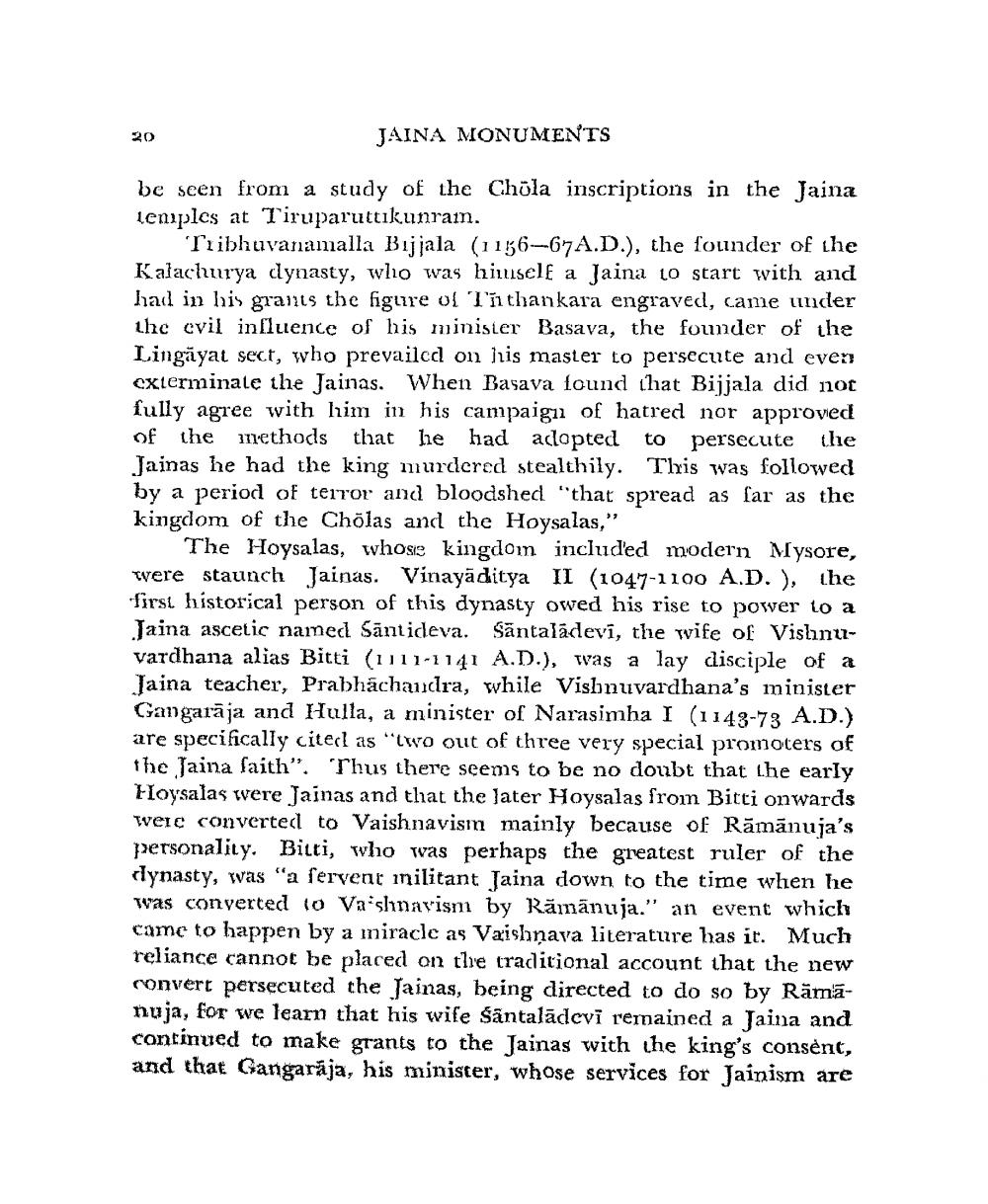________________
20
JAINA MONUMENTS
be seen from a study of the Chola inscriptions in the Jaina temples at Tiruparuttikunrain.
Tribhuvanamalla Bijjala (1156-67A.D.), the founder of the Kalachurya dynasty, wlio was himself a Jaina to start with and had in his grants the figure of Títhankara engraved, came under the cvil influence of his minister Basava, the founder of the Lingayat sect, who prevailed on siis master to persecute and ever cxterminate the Jainas. When Basava found that Bijjala did not fully agree with him in his campaign of hatred nor approved of the nethods that he had adopted to persecute the Jainas he had the king murdered stealthily. This was followed by a period of terror and bloodshed that spread as far as the kingdom of the Chõlas and the Hoysalas,"
The Hoysalas, whose kingdom included modern Mysore, were staunch Jainas. Vinayāditya II (1047-1100 A.D.), the first historical person of this dynasty owed his rise to power to a Jaina ascetic named Sāntideva. Säntalādevī, the wife of Vishnuvardhana alias Bitti (un-1141 A.D.), was a lay disciple of a Jaina teacher, Prabhachandra, while Vishnuvardhana's minister Gangarāja and Hulla, a minister of Narasimha I (1143-73 A.D.) are specifically citecl as "two out of three very special promoters of the Jaina saith". Thus there seems to be no doubt that the early Hoysalas were Jainas and that the later Hoysalas from Bitti onwards were converted to Vaishnavisin mainly because of Rāmānuja's personality. Bitti, who was perhaps the greatest ruler of the dynasty, was "a fervent inilitant Jaina down to the time when he was converted to Va-shnavism by Rāmānuja." an event which came to happen by a iniracic as Vaishnava literature has it. Much reliance cannot be placed on tlie traditional account that the new convert persecuted the Jainas, being directed to do so by Rämanuja, for we learn that his wife Sântalādevi remained a Jaina and continued to make grants to the Jainas with the king's consent, and that Gangarāja, his minister, whose services for Jainism are




